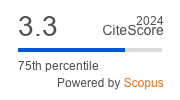Article | Open Access
Vocational Pathways to Higher Education: Real or False Chances?
| Views: | 2142 | | | Downloads: | 2020 |
Abstract: In this study, we examine whether vocational pathways to a higher education entrance certificate (HEEC) via upper secondary vocational schools lead to wages in the first five years of the occupational career that are comparable to the wages achieved after following the “royal roads” in general education, which lead directly to HEEC. We derive hypotheses on wage differences and the reasons for these differences from classical labour market theories such as human capital theory and labour queue theory, which we test using the German NEPS‐SC6‐ADIAB study with 1,256 male and 1,197 female employees. Applying multilevel regression analyses and Kitagawa‐Blinder‐Oaxaca decomposition analyses, we find that graduates from direct pathways earn between 12% (men) and 18% (women) higher wages than graduates from vocational pathways to HEEC. For both men and women, these lower wage levels for the members of the latter group are first of all due to the lower level of their further educational attainments (vocational training/university [of applied science] degree) and school‐related competencies. Furthermore, female graduates from vocational pathways are more likely to be overqualified for their jobs and have less access to better‐paying “closed” occupations than graduates from direct pathways. We conclude that vocational pathways to HEEC cannot fully compensate for disadvantages in labour market opportunities that arise due to an early stratified educational system, and the extent to which they can be compensated is not the same for men and women.
Keywords: occupational career; returns to education; upper secondary education; vocational schools
Supplementary Files:
Published:
Issue:
Vol 13 (2025): Vocational Schools as Pathways to Higher Education: International Perspectives
© Claudia Schuchart, Benjamin Schimke. This is an open access article distributed under the terms of the Creative Commons Attribution 4.0 license (http://creativecommons.org/licenses/by/4.0), which permits any use, distribution, and reproduction of the work without further permission provided the original author(s) and source are credited.


